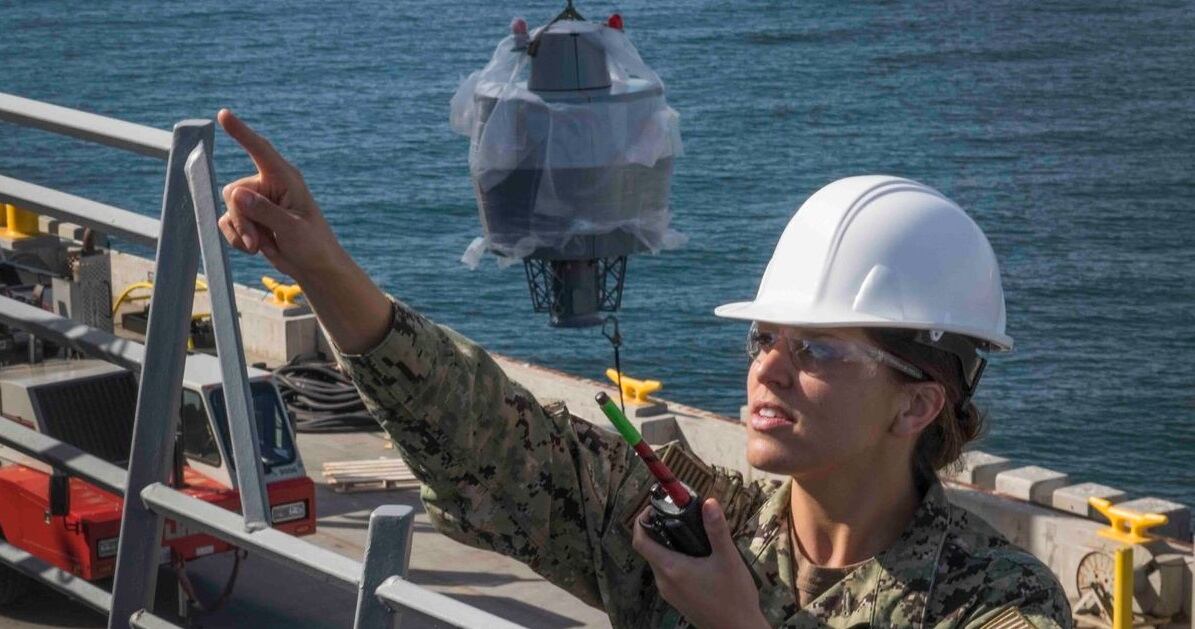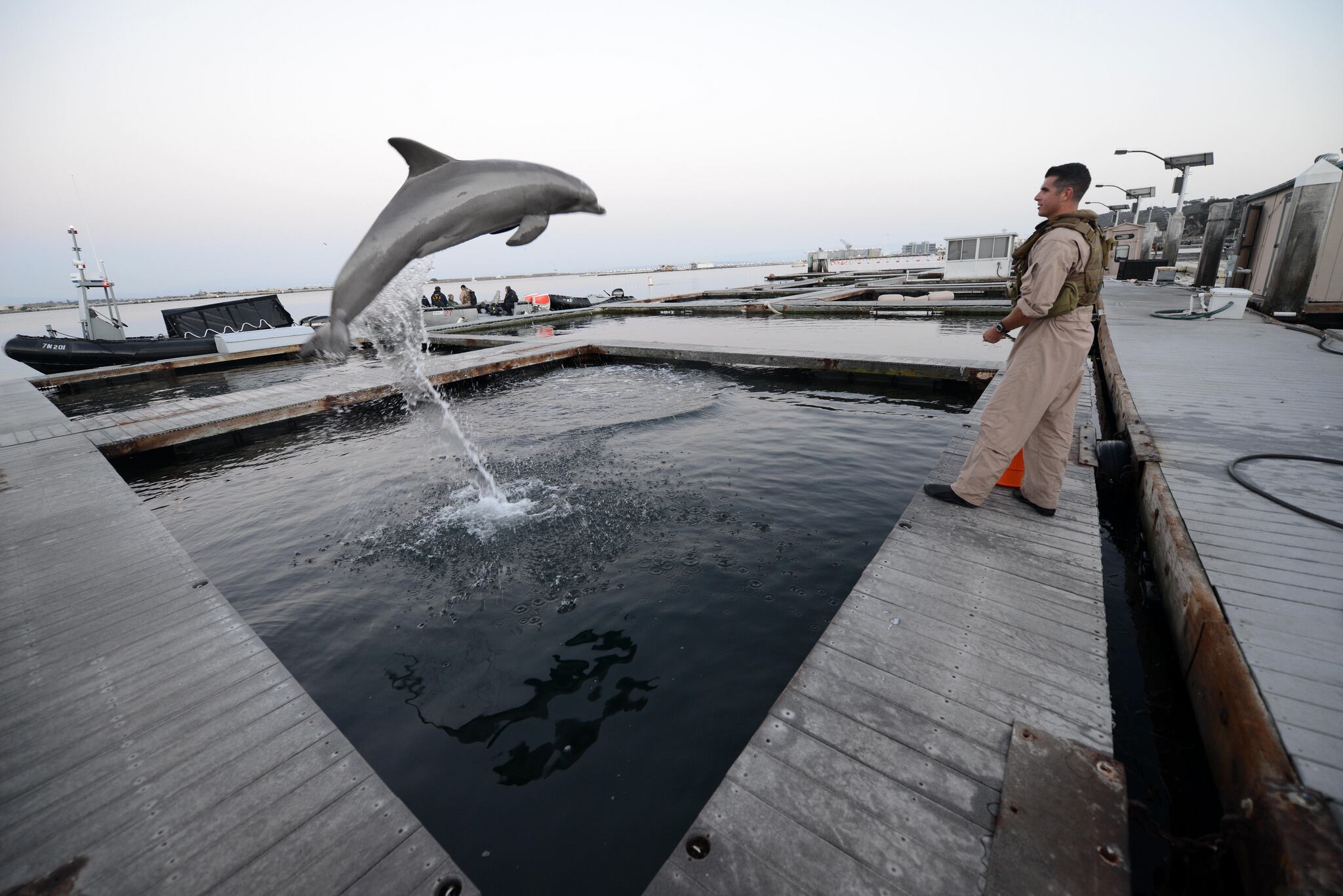Space and Naval Warfare Systems Command’s headquarters buildings are rife with “pest infestation,” roof leaks and other problems that have led some employees to express anxiety over the safety of their workplaces, according to a report by the Naval Inspector General.
Known as SPAWAR, the command spearheads the Navy’s information technology and cyber breakthroughs. But while its mandate is high tech, its facilities are not, investigators determined.
Both SPAWAR leaders and employees “expressed concerns over the age and condition of workplace facilities as well as a history of environmental hazards” at the command’s Old Town Complex headquarters on San Diego’s Naval Base Point Loma, according to the report.
The age and condition of the SPAWAR facilities “seem inconsistent with expectations for the Navy’s information technology (IT) and cyberwarfare systems command,” the report states.
While SPAWAR’s leaders and employees expressed concerns about where they work, the report states that Naval Facilities Engineering Command still graded the facilities as “adequate and sufficient.”
RELATED

SPAWAR spokeswoman Paula Dunn said this week that the command is in “constant communications” with Naval Base Point Loma to help ensure SPAWAR facilities provide a healthy employee environment.
“The quality of facilities aboard the Old Town Complex is high on the list of the command’s concerns,” Dunn said in an email.
While SPAWAR dedicated $26 million to address facility problems from between 2013 to 2016, it did not appear to solve the deficiencies, according to the NAVIG report.
“Unfortunately, SPAWAR’s investments to date have proven insufficient to prevent rook leaks, overcome inefficient heating and cooling systems, and prevent pest infestation,”investigators wrote.
SPAWAR isn’t the only Navy command spending its money to patch up facilities, dollars that don’t flow from Navy Installations Command.
“Budget submitting offices across the Navy divert $250 million each year from various programs to address recurring and emergent facility requirements not in the Department’s budget,” the report states.
The Naval Inspector General’s visit took place in August 2017, six years after the last command inspection, and the report was finished in February.
Even as employees expressed concern about the age and safety of SPAWAR facilities, other Navy agencies gave six of the seven SPAWAR headquarters buildings condition scores that are higher than the service-wide average, the report states.
Part of the problem seems to be the way the buildings were built, investigators determined.
The open-air, “saw-tooth” design of the SPAWAR HQ buildings have proven irresistible to all manner of critters, according to the report.
“The large, open buildings provide shelter to numerous pests,” the report states. “Bird droppings and feathers accumulate throughout.”
And while the three largest buildings let in plenty of sunshine, they offer little protection when it rains. Windows are broken or stuck in the open position, and roof drains sometimes fail, dumping water into the building.
Plumbing systems also don’t always work and air conditioning systems leak, resulting in more water getting into the buildings.
The report states that a plan was in place to address “numerous environmental hazards” at the facilities, and one initiative reduced concentrations of toxic trichloroethylene, or TCE, to acceptable levels around Building 3, according to the report.
RELATED

That initiative stemmed from two SPAWAR work spaces that exceeded new lower response action levels for TCE in 2014, according to Naval Base Point Loma spokeswoman Sharon StephensonPino.
“Systems were installed and since October 2015, air monitoring testing indicates spaces are below the (Environmental Protection Agency) response action levels,” she said. “Recurring testing of the spaces and remediation of the TCE is on-going and will continue until the Navy and the State regulatory agencies have agreed that the established cleanup goals have been met.”
“Other environmental hazards addressed in (building 3) include bird pathogens from droppings on drop ceilings directly over employee workspaces, high carbon dioxide levels resulting from insufficient air ventilation, and aldehyde gas released from new furniture,” the report states.
SPAWAR posted “all clear” test results on an internal site after treating the hazards and moving people back into the spaces, according to the Naval Inspector General.
“The workforce, however, continues to express anxiety over environmental concerns,” the report states.
At the same time, “SPAWAR has no safety and occupational health management system,” according to the Naval Inspector General.
StephensonPino said nets were installed to prevent birds from entering the areas and affected work spaces were deep cleaned, but also said the base must prioritize its maintenance and repair budget.
“There is simply not enough funding to address all the (Old Town Complex) deficiencies,” she said. “SPAWAR continues to communicate with their workforce regarding facility repairs and the ongoing sampling and remediation efforts at Old Town Complex.”
The report states that the Naval Inspector Genreal would forward “a comprehensive list of deficiencies and recommendations” to SPAWAR, but that list was not publicly released and Navy officials declined to provide it to Navy Times.
While NAVIG inspectors found that SPAWAR is effectively carrying out its mission, they also found that the command is concerned about requirements continually increasing without any increase in resources to meet the demand.
“If Navy truly views Cyberspace as a warfighting domain, we believe there’s merit in bringing SPAWAR on par with the other (systems commands) with respect to resourcing and Flag sponsorship,” the report states.
Dunn said the command continues to pursue fast, affordable development and innovation regarding space, cyberspace and other missions.
“We will continue to look for ways to improve our efficiency so that when challenged with limited resources we can achieve maximum performance,” she said.
Investigators also found issues with SPAWAR’s intelligence oversight and intelligence-related contracts.
As of the report’s writing, SPAWAR hadn’t implemented a process to ensure contracts involving intelligence include a clause that contractors report “any significant, highly sensitive matter or questionable intelligence activity.”
SPAWAR’s security programs, however, were praised as among the best the inspectors had seen.
Geoff is the managing editor of Military Times, but he still loves writing stories. He covered Iraq and Afghanistan extensively and was a reporter at the Chicago Tribune. He welcomes any and all kinds of tips at geoffz@militarytimes.com.




